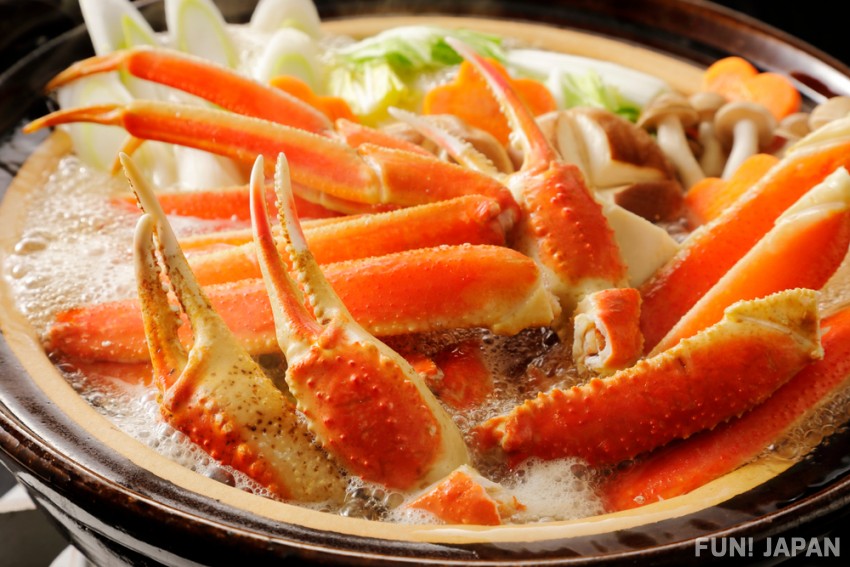
Simmered in a hotpot, shredded on rice bowls or simply served whole - Japan’s crab dishes are a real treat for seafood lovers. There are countless options and three regions known for catching exceptional crabs. There are a surprising amount of varieties, and while some can fetch prices in the millions of yen, they can also be very affordable if you know what to look for.
The Best Regions for Crab in Japan
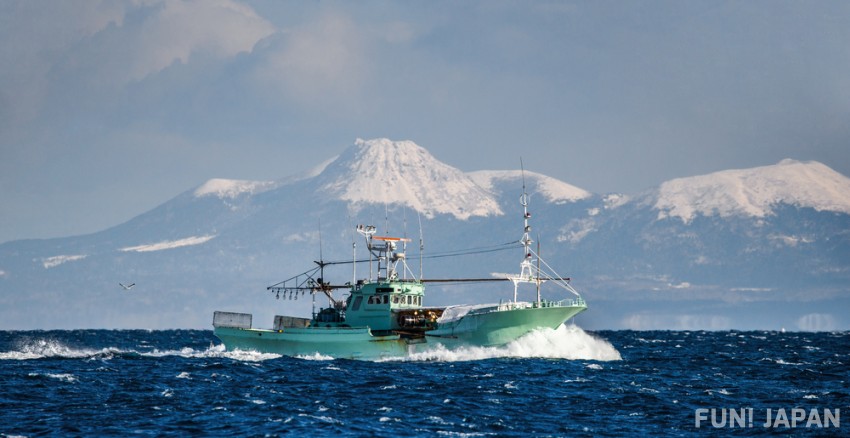
There are three main areas known for crab in Japan: Hokkaido, Hokuriku and the San’in Regions. While many have heard of Hokkaido, the shores of San’in and Hokuriku are a little less well-known. Located on the west side of Japan, they are fish from the Sea of Japan, where calm, cold waters allow for some of the highest quality crab in the region to thrive. Hokuriku is made up of Fukui, Toyama and Ishikawa among other prefectures, while the Sanin Region overs a coastal stretch across Tottori, Shimane and Yamaguchi prefectures.
In Hokkaido, the icy waters of the Sea of Okhotsk and the Pacific Ocean offer up a wide variety of crustaceans, but the crabs are the favourite here. Thanks to the varied locations and the different seas, you can try an impressive array of crabs in Japan.
Red King Crab (タラバガニ, Tarabagani)
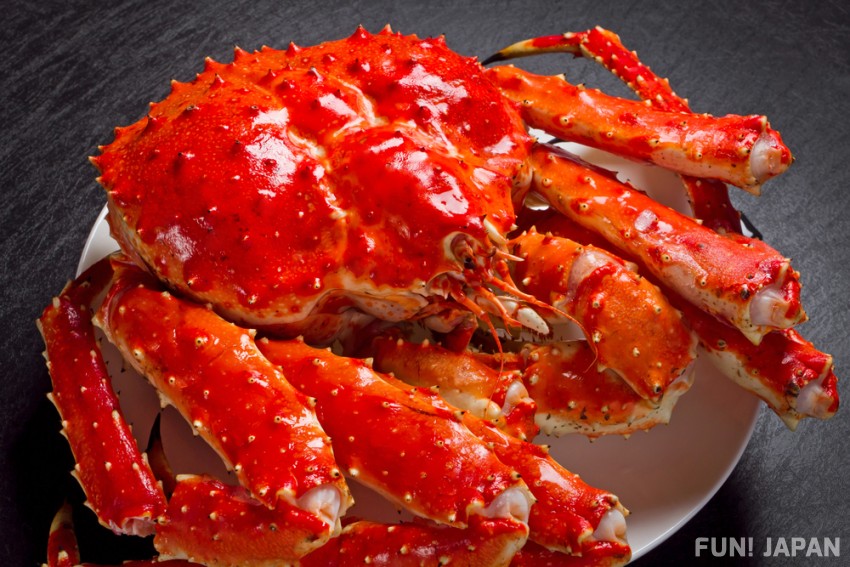
One of the most popular in Japan and nicknamed ‘King of Crabs’, Red King Crabs are the largest of the King Crab variety. They can grow to a leg span of up to 1.8m and weigh over 12kg, making them exceptionally popular with fishermen. They are found in the waters of the Pacific Ocean and are associated with the fishing port of Wakkanai (稚内) on the northernmost point of the island. While the crabs are a dull brown when caught, they turn a fantastic red when cooked - lending them their name. The crabs are available from April to May and November to February, although a majority of the crab in Japan is imported rather than caught domestically. The Red King Crab is eaten around the new year as a sign of prosperity with thick long legs being a highlight.
Blue King Crab (アブラガニ, Aburagani)
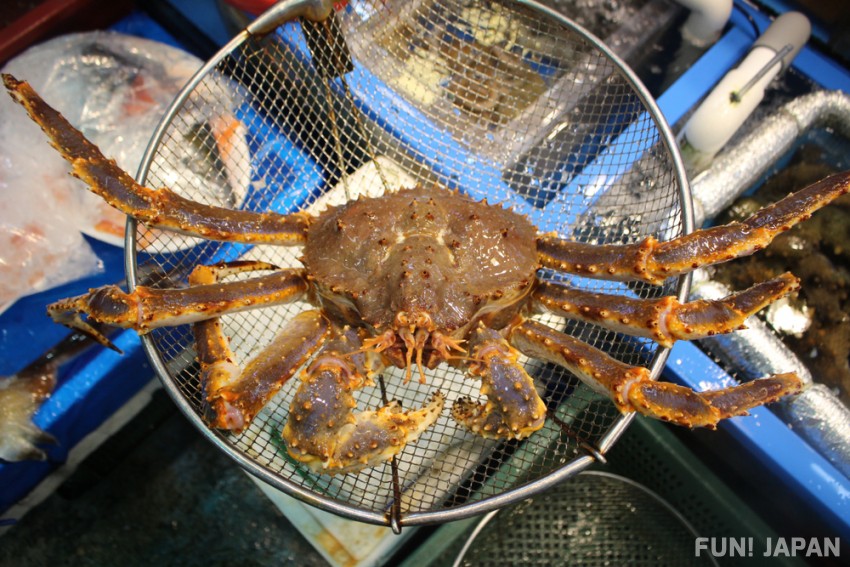
Large but generally smaller than the Red variety, Blue King Crab are a more affordable option and known for their blue colour when uncooked. Abashiri (網走) and Doutou (道東) area are the main points in Hokkaido for catching Blue King Crab, although the fishing rate had reduced over the years to protect the species.
Snow Crab (ズワイガニ, Zuwaigani)
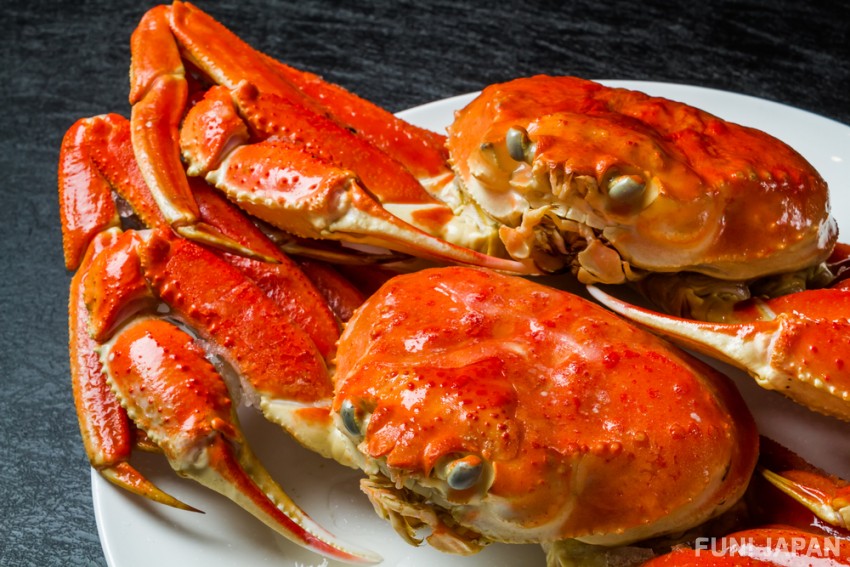
While they can be found along a large portion of Japan’s West Coast, including Hokkaido, Snow Crabs are largely associated with Tottori (鳥取). Called Zuwaigani (ズワイガニ) in Japanese, the males are also known as Matsuba-gani (松葉がに) if caught in Kyoto, Hyogo or Tottori, or Echizen-gani (越前がに) if caught in Fukui. Females are known as Seiko (セイコ) or Kobako (香箱), with their orange eggs making a popular topping for rice. The zuwaigani often reaches high prices at the annual market thanks to its combination of sweet and unusually umami flavour. Umami is a relatively rare and distinct flavour often associated with Japanese food and comprises of a deep, earthy and extremely savoury flavour. A bid of over five million yen was achieved in 2019 for the best catch of the first day’s haul, with the purchase considered auspicious. Their season runs from November to March and they’re a popular winter dish across Japan.
Horsehair Crab (毛ガニ, Kegani)
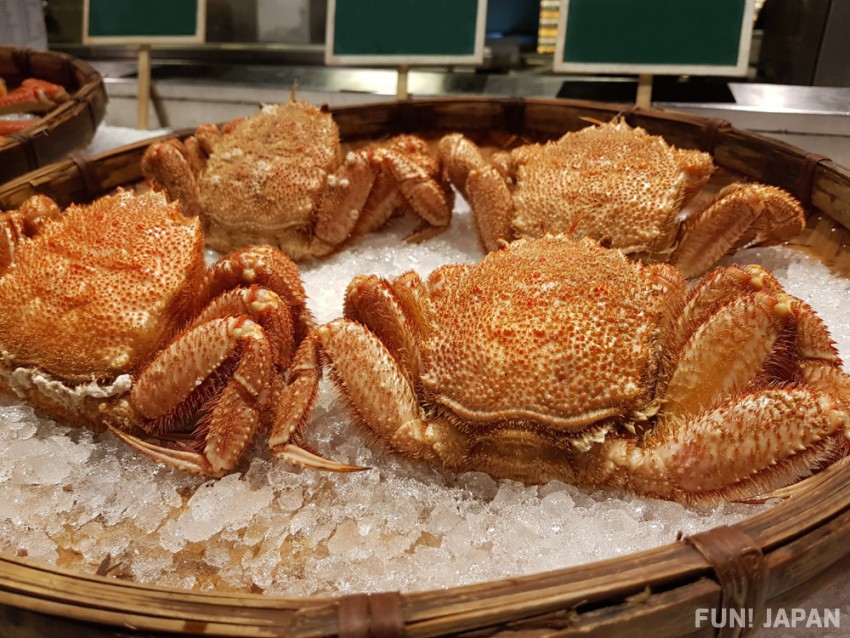
Also known as the hairy crab, these are smaller creatures with an average weight of around 1kg. Despite this, they are one of the most popular crabs in Japanese cuisine as they are affordable and tasty. They have a good amount of rich crab-miso (crab innards) and crab meat, with shorter, fatter legs than larger varieties. They are easy to spot as they have compact, small bodies covered with coarse hair but a surprisingly soft shell. They are mainly caught in Hokkaido and can be caught in different regions throughout the year.
Hanasaki Crab (花咲ガニ, Hanasakigani)
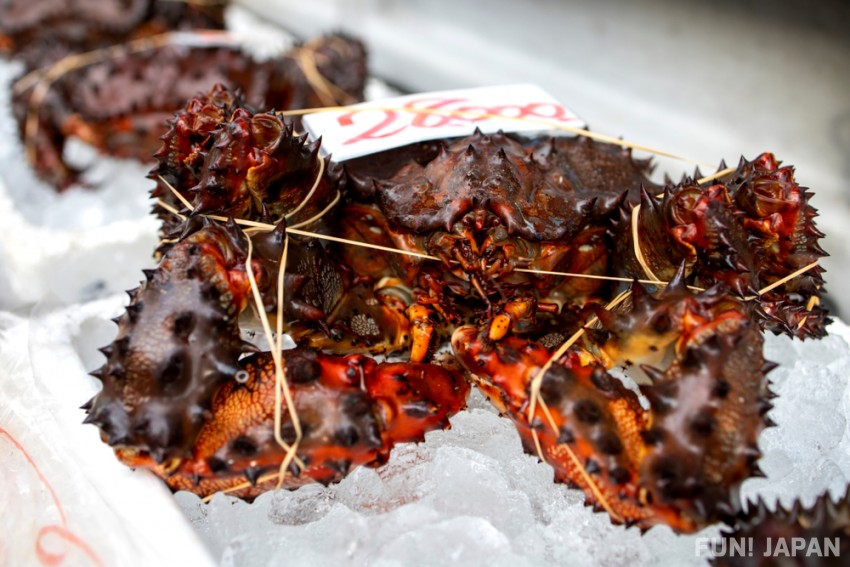
Named both after its growing red colour during cooking (hanasaki meaning ‘blooming flower’) as well as the port it is primarily caught in, the hanasaki crab is a Hokkaido specialty. The town of Nemuro (根室) has an annual festival to celebarte the start of the season with many forms of crab to try. This small species is popular for the eggs found in females as well as the sweet flavour of the crab meat.
Japanese Spider Crab (高足ガニ, Taka-ashi-gani)
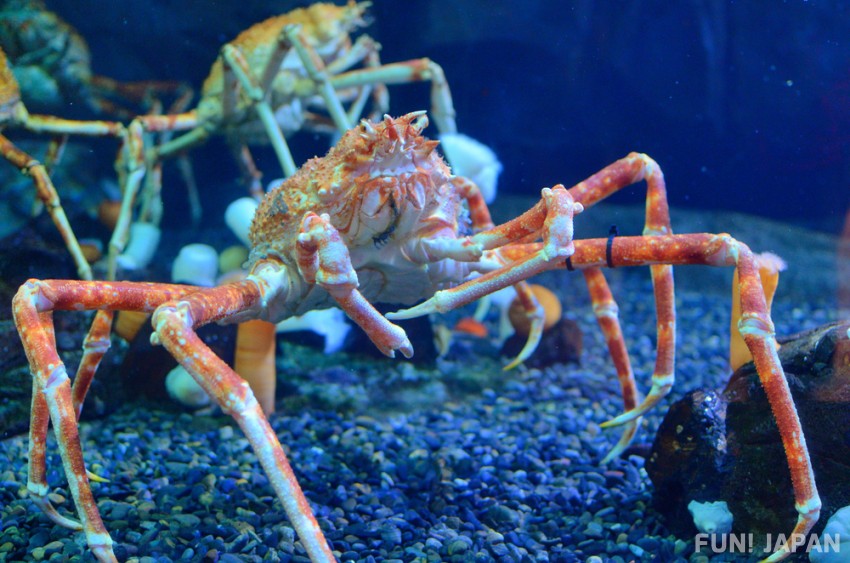
Translating as ‘tall-legged-crab, the spider crabs are similar to creatures from science-fiction films but really do roam the seas of Japan. Reaching up to 3.7m in leg span, they are the largest of the world’s 60,000 species of crustacean and can live up to 100 years. They are found on the pacific side of Japan and are known to decorate their shells with anemones or sea sponges as a form of camouflage. As they live in deep waters, going as far as 500m, they are not widely fished and are considered a delicacy in Japan. As part of a conservation effort they cannot be fished during spawning season, so trying one is a luxury indeed.
One of the most popular places to enjoy spider crab in Japan is in Tottori, with Michelin-starred Kaniyoshi being one of the most well known. The ex-sumo wrestling owner is a crab supplier with direct links to the local Hamasaka Port, so diners are guaranteed the best crab available. Across Japan, the chain Kani Douraku is a great option and they offer the best seasonal option including a more affordable menu.
How to Enjoy Eating Crab In Japan

One of the most important elements of enjoying crab in Japan is knowing which species you will try, and which part is the most delicious. Along with the meat, a popular delicacy in Japan is the crab innards - known as kani-miso. Some species provide more delicious kani-miso than others - for example, the Red King Crab is poor while the smaller, cheaper Horsehair Crab offers delicious kani-miso. If you are able to enjoy an entire crab, the restaurant will prepare it for you and you can simply tuck in. If you want to sample crab instead you can try crab sushi (boiled or raw), crab tempura or a crab hotpot. To enjoy the subtle flavours of crab it is best to keep your cooking method simple - as they say, less is more. Crab leg miso soup is a popular option while kani-meshi (crab rice) is a great way to end a crab course menu.
Reserve for Crab restaurant in Hokkaido!
※Purchasing or reserving the products introduced in the article may result in a portion of the sales being returned to FUN! JAPAN.
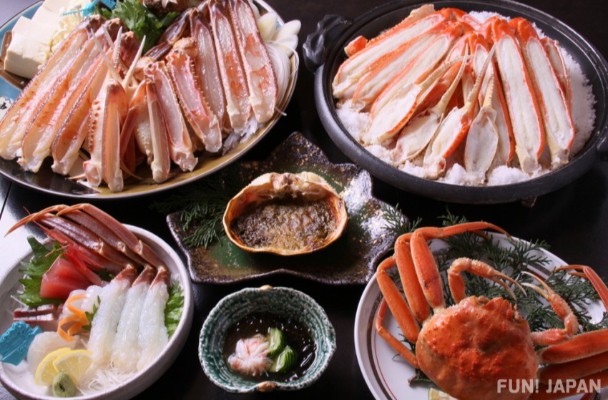
Comments